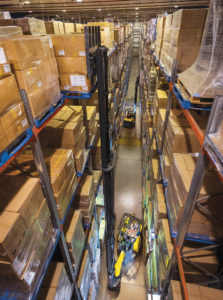Fatal accidents in the workplace are thankfully rare events. By studying the type and occurrence of such incidents, the Health and Safety Executive are able to monitor how and where such accidents occur year on year. By analysing the statistics, it is possible to identify long and short-term patterns, with the ultimate aim of increasing safety for both workers and members of the public.
The recently released HSE 2016/2017 report presents statistics for those cases of fatal injury reported to the relevant enforcing authorities, which were judged as meeting the reporting criteria as set out in the Reporting of Injuries, Diseases and Dangerous Occurrences Regulations (RIDDOR).
Fatal injuries in the workplace
Unfortunately, during the 2016/2017 period, a total of 137 workers were killed at work in Great Britain. Whilst this represents a slight fall in deaths at work versus the previous year, generally, the number of fatal injuries in the workplace has remained broadly level for the past five years.
Injuries by industry
Whilst the construction and agriculture industries tend to report the highest number of fatal accidents by absolute count, this year saw fatalities in construction at the lowest recorded level for the sector at 30. Based on annual average rates over the past five years (which gives a more stable picture) however, agriculture and waste & recycling see the highest number of incidents overall.
Types of accident at work
Just six main types of accident at work account for nearly three-quarters of all fatalities. Being struck by moving vehicles, falls from a height and being struck by a moving (including flying or falling) object continue in 2016/2017 as the three main causes of fatal injury. Of particular note to those using the forklifts or other vehicles is the sad statistic that this year 31 people lost their lives by being struck by a moving vehicle. It is vital for users to observe stringent safety procedures when operating vehicles to reduce the risk of serious harm.
Employment status and accident risk
The UK consistently achieves one of the lowest rates of recorded fatalities in the workplace versus other EU countries. Within Great Britain however, the rate of fatal injuries sustained for the self-employed is more than two times as high as for the employed. These accidents happened to workers in primarily the agriculture and construction industries. The report shows that whilst there is regional variation throughout England, Scotland and Wales, these figures are strongly influenced by localised variation in industry type. Overall, after standardised analysis, rates of a fatal accident for Scotland and Wales are not significantly different from those in England.
Longer term trends
The good news is that the overall incidence of fatal accidents in the workplace is declining in Great Britain – 137 deaths in 2016/2017 compared with 287 deaths twenty years ago. However, this trend has been levelling off in recent years, with the rate of fatal injury stabilising at around 0.43 deaths per 100,000.
The figures on fatal accidents in the HSE report exclude those related to road collisions, members of the armed forces, those travelling by air or sea and deaths attributable to natural causes. However, responsible businesses across all sectors must continue to prioritise thorough health and safety policies, and operate within accredited schemes to ensure the safety of their employees and customers.
Get in touch with our friendly team if looking to hire or buy a forklift!
